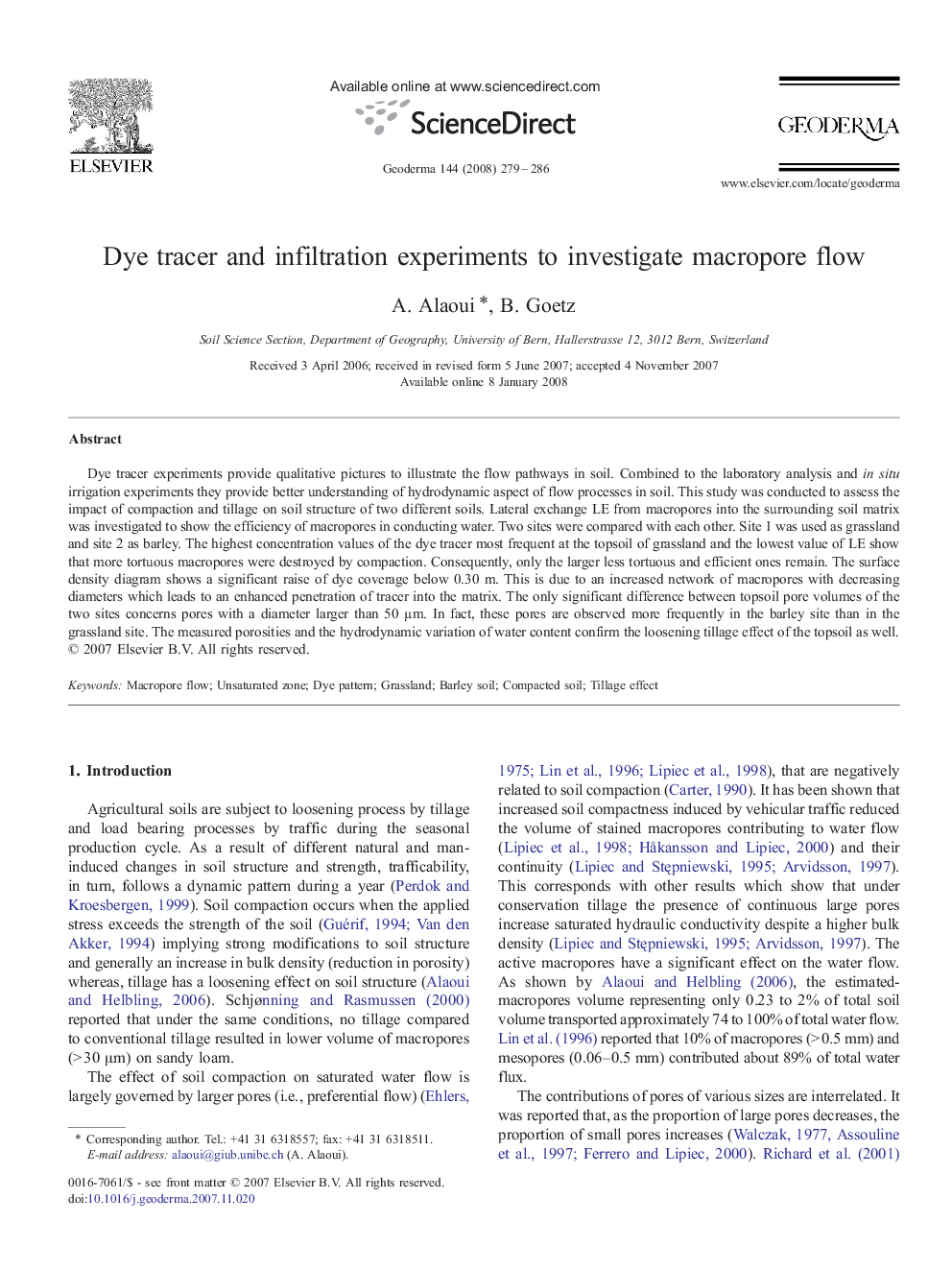| Article ID | Journal | Published Year | Pages | File Type |
|---|---|---|---|---|
| 4575227 | Geoderma | 2008 | 8 Pages |
Dye tracer experiments provide qualitative pictures to illustrate the flow pathways in soil. Combined to the laboratory analysis and in situ irrigation experiments they provide better understanding of hydrodynamic aspect of flow processes in soil. This study was conducted to assess the impact of compaction and tillage on soil structure of two different soils. Lateral exchange LE from macropores into the surrounding soil matrix was investigated to show the efficiency of macropores in conducting water. Two sites were compared with each other. Site 1 was used as grassland and site 2 as barley. The highest concentration values of the dye tracer most frequent at the topsoil of grassland and the lowest value of LE show that more tortuous macropores were destroyed by compaction. Consequently, only the larger less tortuous and efficient ones remain. The surface density diagram shows a significant raise of dye coverage below 0.30 m. This is due to an increased network of macropores with decreasing diameters which leads to an enhanced penetration of tracer into the matrix. The only significant difference between topsoil pore volumes of the two sites concerns pores with a diameter larger than 50 µm. In fact, these pores are observed more frequently in the barley site than in the grassland site. The measured porosities and the hydrodynamic variation of water content confirm the loosening tillage effect of the topsoil as well.
